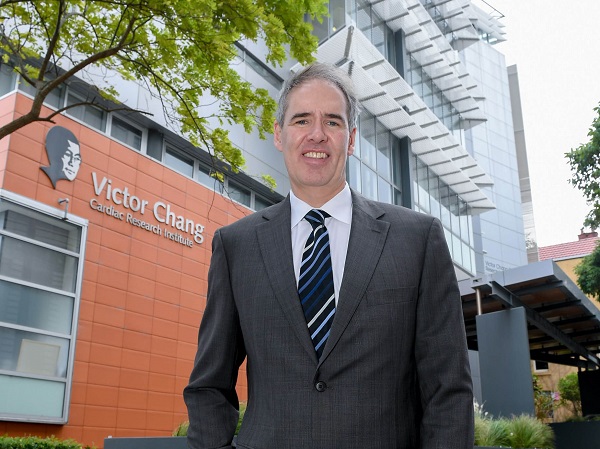Imagine being diagnosed with a potentially serious cardiovascular disease. Worried and possibly frightened, you’ll have many questions.
But what if there are, essentially, no answers? Your specialist can tell you what’s wrong, but not why, why it’s happening to you, nor what the future holds. There are treatment options, but no cure.
Until a decade or so ago, that was the story of fibromuscular dysplasia, a disease that affects the blood vessels and may block blood flow to key parts of the body. Among other things, it has the potential to cause high blood pressure, stroke or heart attack.
Clinical cardiologist and researcher Professor Jason Kovacic has been a leader in the quest to unravel the confounding mystery of cardiovascular diseases such as fibromuscular dysplasia. His groundbreaking work has earned him a NSW Government Cardiovascular Research Leadership Grant, luring him and his wealth of experience back to Sydney after more than a decade in the United States.

The new executive director of the Victor Chang Cardiac Research Institute, Kovacic will work with the Institute and the University of New South Wales to deploy the significant grant of $500,000 each year for five years. He’s started gathering a cutting-edge team to further explore the first genetic discovery in the fight against fibromuscular dysplasia – a gene called PHACTR1.
“This grant represents a really unique opportunity,” Kovacic says. “It’s inevitable when you make a big move across the world that there’s loss of productivity. There are challenges to getting up and running, and you have to build the research team. Having this grant makes that process so much more streamlined and straight forward.”
As a school-leaver in the 1980s, Kovacic briefly considered studying law before, at the last minute, switching to medicine at the University of Melbourne. “It’s a perfect balance of science and humanity,” he says. “I never looked back.”
He had, however, to find time for a competing ambition: a talented rower, Kovacic had Olympic aspirations to blend with the academic ones.
“That was the challenge,” he laughs. “I did a couple of years medicine, a year of rowing, then a year of medicine … I’d done well with rowing, I’d made the national team at the junior level, rowed with guys from the Awesome Foursome and filled in for them on a few occasions.” But after missing the team for Athens in 1996, his focus was fully on medicine.

“I’m very happy I made the right choices, and I took the rowing as far as it would go: it taught me a lot of life lessons about persistence, tenacity, teamwork, health and fitness.”
After training as an interventional cardiologist at St Vincent’s Hospital in Sydney and completing a PhD at the Victor Chang Cardiac Research Institute, Kovacic relocated to the United States in 2007. There he spent 13 years working with and leading research teams at such prestigious organisations as the National Institutes of Health and, most recently, as Professor of Medicine, Cardiology, at the Icahn School of Medicine at Mount Sinai, New York.
“In 2010, fibromuscular dysplasia was unquestionably one of the most common cardiovascular diseases for which nothing whatsoever was known about the cause, the genetics, possible treatments, testing … just nothing. It was a no-brainer to me back then that we should get to researching this disease,” he explains.
Kovacic was able to build a team and establish a major research program around fibromuscular dysplasia, which he has been running in the United States for the last decade. This has led to a series of discoveries about this disease, and he and his team have even shown that it is likely possible to develop a blood test to diagnose patients with fibromuscular dysplasia.
But as a true physician-scientist, he still dedicates time to seeing patients. “Although it might not have led to a treatment yet, for patients with fibromuscular dysplasia to hear we’ve made such huge progress in a relatively short time opens up a whole new outlook for them. It gives them hope, ” he says.
“The progress we have made is helping to redefine how we look at fibromuscular dysplasia and other related diseases. We have a long way to go, but the NSW Government Cardiovascular Research Leadership Grant will be another important boost for this research.”
By Michelle Schlechta
Updated 4 years ago
